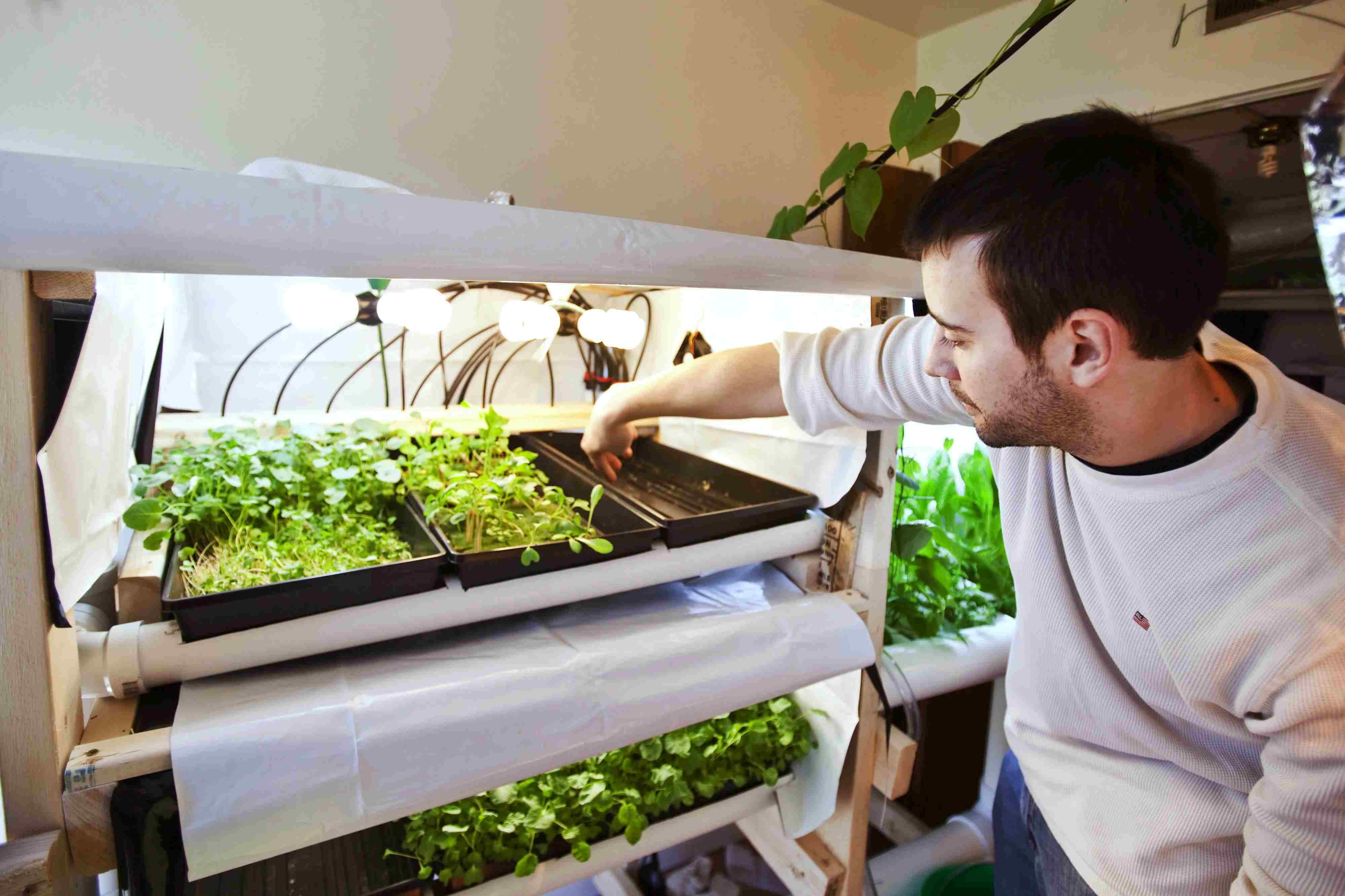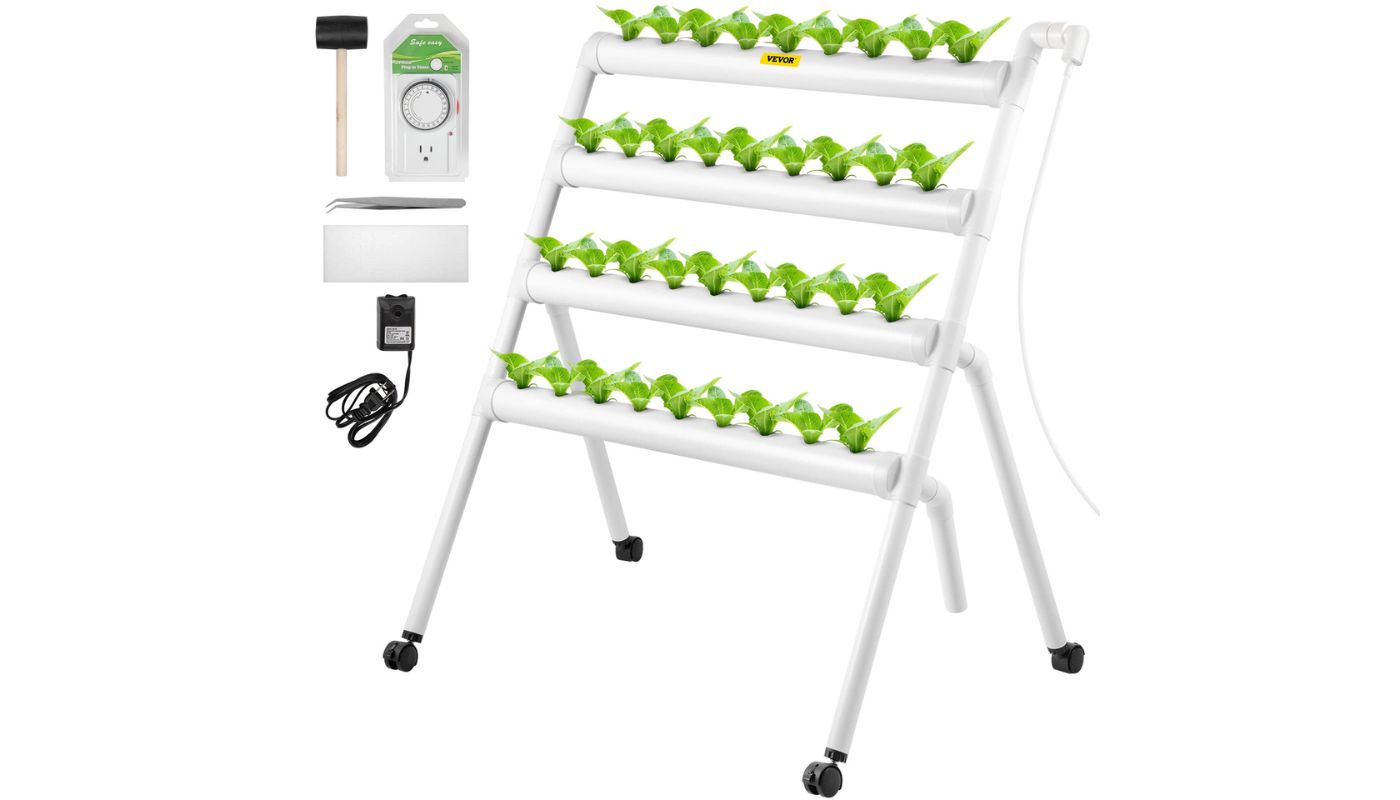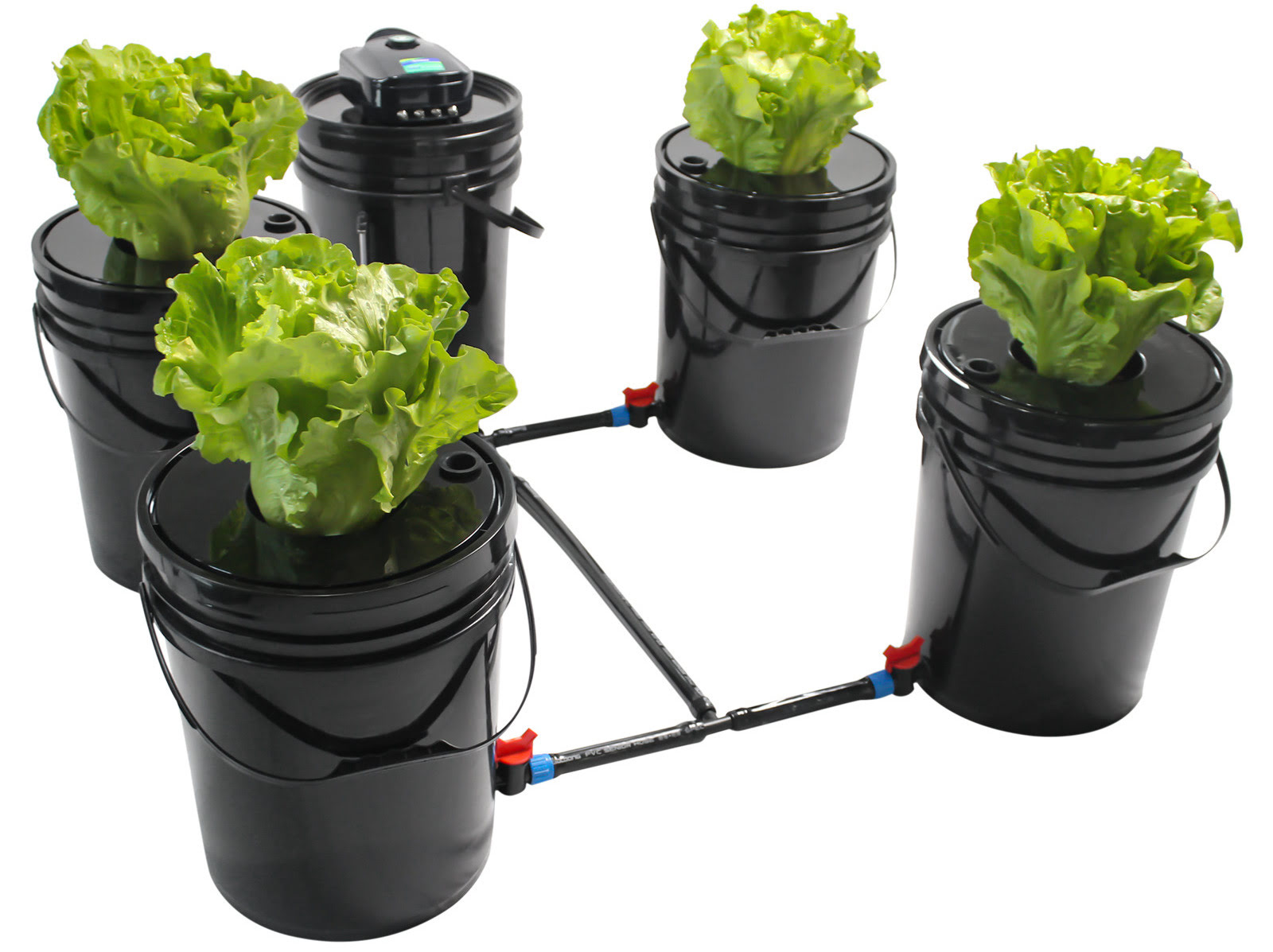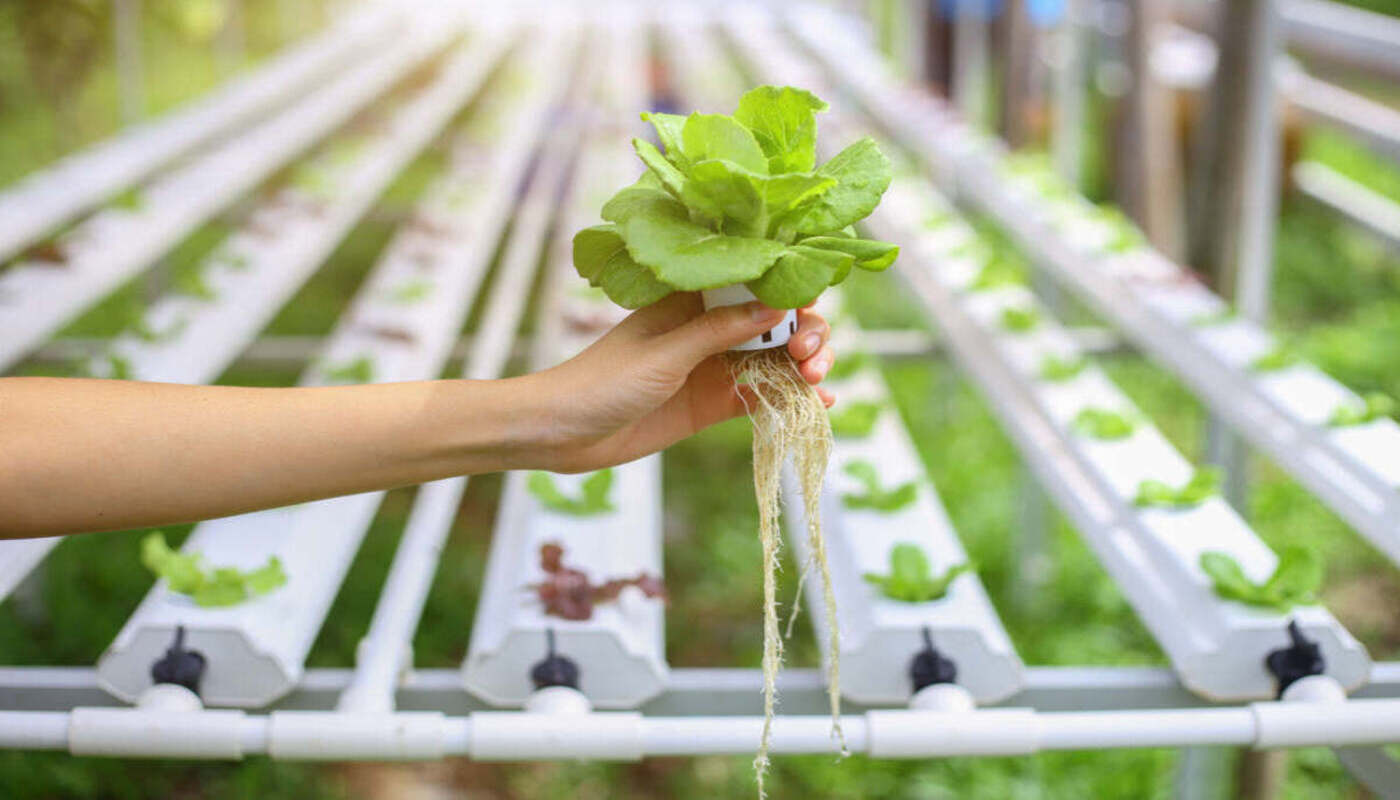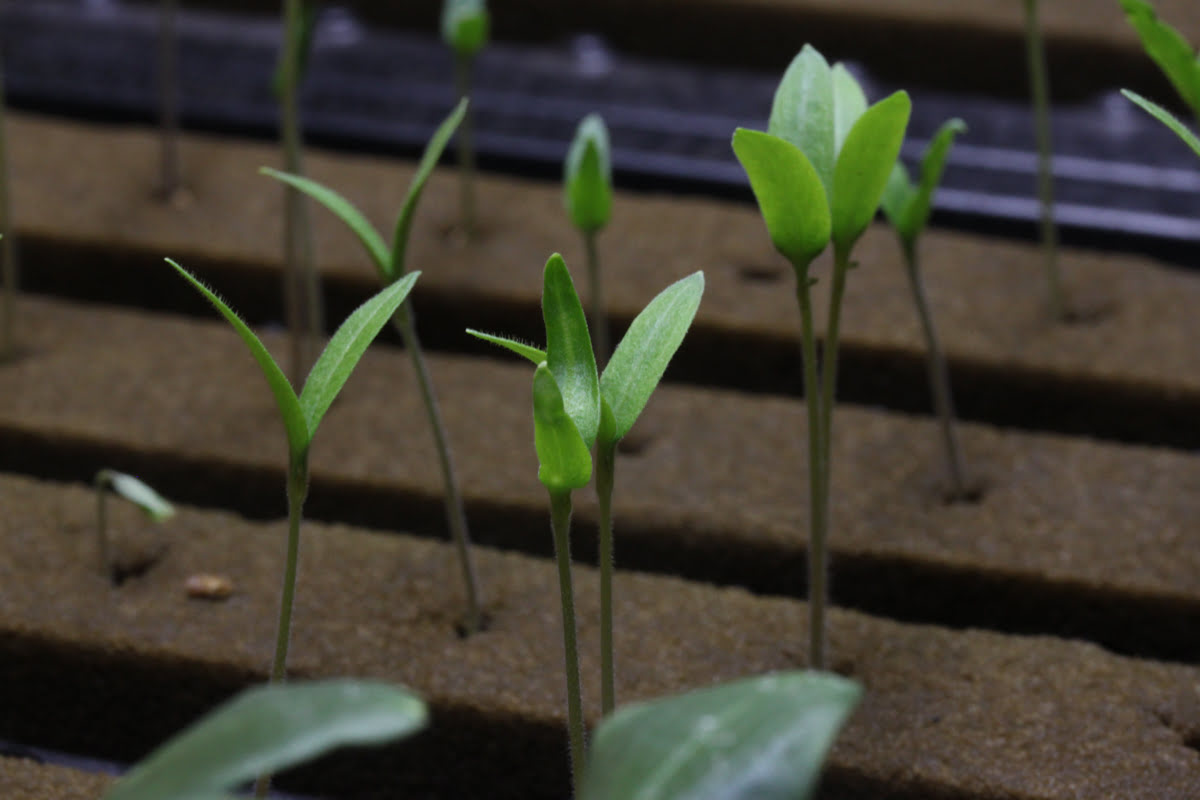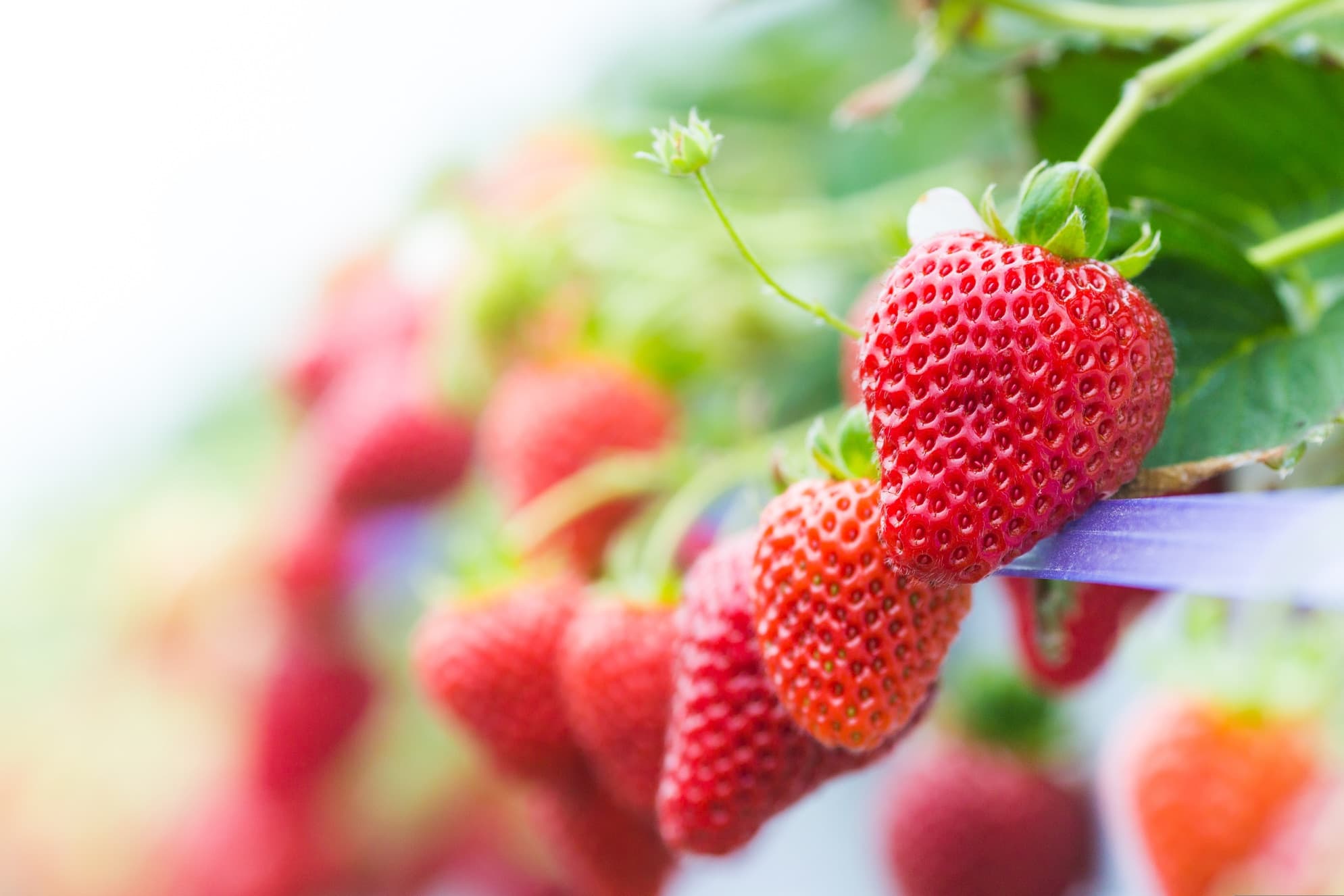Home>Types of Gardening>Edible Gardening>Which Plants Grow Best In Hydroponics
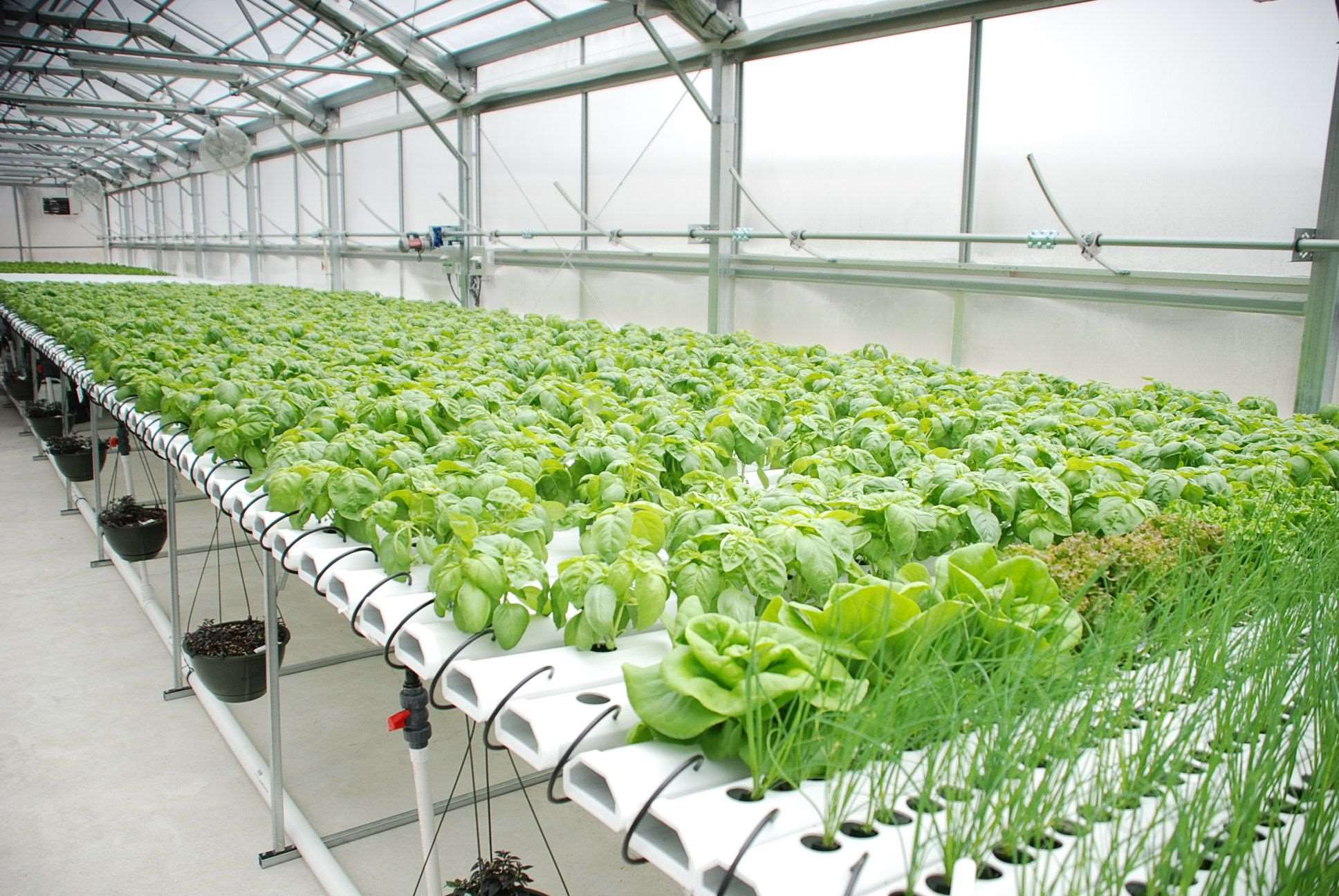

Edible Gardening
Which Plants Grow Best In Hydroponics
Modified: January 22, 2024
Discover the top edible gardening plants that thrive in hydroponics systems. Maximize your harvest with these hydroponic-friendly options.
(Many of the links in this article redirect to a specific reviewed product. Your purchase of these products through affiliate links helps to generate commission for Chicagolandgardening.com, at no extra cost. Learn more)
Table of Contents
Introduction
Welcome to the world of hydroponics, where gardening is reimagined and taken to new heights. If you’re looking for a way to grow your own food without a traditional soil-based garden, then hydroponics might just be the solution you’ve been searching for.
Hydroponics is a method of growing plants that eliminates the need for soil and instead uses a nutrient-rich water solution. This innovative gardening technique has gained popularity in recent years due to its numerous benefits and the ability to grow a wide variety of plants in smaller spaces.
One of the key advantages of hydroponics is its ability to conserve water. Unlike traditional gardening, where a significant amount of water is lost through evaporation or drainage, hydroponics recirculates water, minimizing wastage. This makes it an eco-friendly option for those who wish to reduce their environmental footprint.
Another benefit of hydroponics is its ability to control and optimize the nutrient levels of plants. By directly providing essential nutrients to the plants’ roots, hydroponics ensures that they receive exactly what they need for healthy growth. This nutrient precision results in faster growth rates, higher yields, and enhanced nutritional value in the produce.
Hydroponics also offers the advantage of being adaptable to various environments. Whether you live in a small apartment, have limited outdoor space, or even want to set up a garden in your basement, hydroponics can be customized to suit your needs. With vertical gardens, tower systems, and even countertop setups, hydroponics allows you to grow plants virtually anywhere.
The versatility of hydroponics extends to the types of plants you can grow. While traditional gardening often requires specific soil conditions, hydroponics liberates you from these limitations. Leafy greens, herbs, tomatoes, strawberries, peppers, and cucumbers are just a few examples of the wide array of plants that thrive in a hydroponic system. Whether you’re a culinary enthusiast looking to add fresh herbs to your dishes or a health-conscious individual wanting to grow your own pesticide-free produce, hydroponics can satisfy your gardening aspirations.
In the following sections, we will explore the best plants to grow in a hydroponic system and provide you with insights on how to optimize their growth. Get ready to embark on a journey of discovery as we delve into the world of hydroponic gardening and unlock the secrets to successful plant cultivation!
Benefits of Hydroponics
Hydroponics offers a multitude of benefits that make it an attractive option for both beginner and experienced gardeners. Let’s take a closer look at some of the advantages of this innovative gardening technique.
1. Water Efficiency: Hydroponics is incredibly water-efficient, using only a fraction of the water needed in traditional soil-based gardening. With traditional gardening, water can be lost through evaporation, runoff, or absorption by surrounding plants or soil. In hydroponics, water is recirculated, minimizing water wastage and making it an environmentally friendly option.
2. Space Optimization: Hydroponics allows you to maximize your growing potential, even if you have limited space. With vertical gardening techniques, plants can be stacked on top of each other, utilizing vertical space effectively. Additionally, hydroponic systems can be set up in small indoor areas, such as basements or apartments, making it accessible to anyone with a desire to grow their own food.
3. Year-Round Cultivation: Unlike traditional gardening, which is often limited by seasonal changes, hydroponics enables year-round cultivation. By controlling the growing environment, including temperature, humidity, and lighting, you have the ability to grow plants consistently throughout the year. This means you can enjoy fresh produce, even during the winter months.
4. Enhanced Plant Growth: Hydroponic systems provide plants with the ideal conditions for growth. By providing nutrients directly to the roots, plants can absorb them more efficiently, resulting in faster growth rates. Additionally, the controlled environment minimizes the risk of pests, diseases, and weeds, ensuring healthier plants with higher yields.
5. Flexible Nutrient Control: In hydroponics, you have complete control over the nutrient composition that the plants receive. This allows you to tailor the nutrients to the specific needs of each plant, resulting in optimal growth and development. You can experiment with nutrient solutions and adjust them as needed, ensuring your plants receive the ideal balance of minerals for robust growth.
6. Pesticide-Free Gardening: Hydroponics provides a pesticide-free gardening option. Without soil, many soil-borne pests and diseases are eliminated or reduced. This means you can grow your plants without the need for harmful chemicals, resulting in healthier, more natural and organic produce.
7. Increased Variety of Plants: Hydroponics opens up a whole new world of plant possibilities. You are not limited by the soil conditions of your region, allowing you to grow a wide variety of plants that may not typically thrive in your area. From leafy greens and herbs to fruiting plants like tomatoes and strawberries, the options are endless.
With all these advantages, it’s no wonder that hydroponics is gaining popularity among gardeners of all levels. The next sections will delve into specific plants that grow exceptionally well in a hydroponic system, providing you with insights on how to successfully cultivate them. Get ready to embark on a journey of green-thumb success!
Choosing the Right Plants for Hydroponics
When it comes to hydroponic gardening, selecting the right plants is crucial for success. While nearly any plant can be grown hydroponically, there are certain plants that are particularly well-suited for this method. Here are some factors to consider when choosing plants for your hydroponic system:
1. Growth Habits: Consider the growth habits of the plants you want to grow. Plants that have strong root systems and are well-suited to vertical growth, such as leafy greens and herbs, are ideal for hydroponics. These plants thrive in nutrient-rich environments and can be easily trained to grow upwards, making the most of limited space.
2. Nutrient Requirements: Different plants have varying nutrient requirements. Some are more finicky and require specific nutrient ratios, while others are more forgiving. It’s important to understand the nutritional needs of the plants you want to grow and ensure that your hydroponic system can provide those nutrients effectively.
3. Lighting Requirements: Most plants require adequate light for photosynthesis. When choosing plants for hydroponics, consider their lighting requirements and ensure that you have a suitable light source for their growth. Many hydroponic systems use artificial lighting, such as LED or fluorescent lights, to provide the necessary light spectrum for optimal plant growth.
4. Space Considerations: Take into account the available space for your hydroponic system. Some plants, like sprawling vine plants such as tomatoes or cucumbers, require more space to grow and may not be suitable for smaller setups. Opt for plants that can be grown efficiently in the space you have available to maximize your yields.
5. Desired Yield and Harvest Time: Consider your goals for yield and the time it takes for plants to reach maturity. Some plants, like leafy greens and herbs, have a quick growth cycle and can be harvested multiple times in a season. Others, like tomatoes or strawberries, have a longer growth cycle but provide a bountiful harvest. Choose plants that align with your desired yield and the time you can dedicate to their care.
6. Personal Preferences: Finally, consider your own culinary preferences and gardening aspirations. If you love fresh salads and enjoy experimenting with different herbs and greens in your dishes, focus on plants like lettuce, spinach, basil, and cilantro. If you’re a fan of fresh tomatoes, peppers, or strawberries, prioritize these plants in your hydroponic garden. Growing plants that you enjoy and have a personal connection to can add an extra layer of satisfaction to your gardening experience.
By considering these factors, you can choose the right plants for your hydroponic system and set yourself up for a successful and fulfilling gardening journey. In the following sections, we will delve into specific plants that thrive in hydroponic systems, providing you with insights on how to optimize their growth and harvest. Get ready to witness stunning growth and enjoy the fruits (and vegetables!) of your labor!
Leafy Greens
Leafy greens are some of the easiest and most popular plants to grow in a hydroponic system. They are packed with essential nutrients, grow quickly, and can be harvested multiple times in a season. Here are some popular leafy greens that flourish in hydroponic setups:
1. Lettuce: Lettuce is a staple in many diets and is an excellent choice for hydroponic gardening. Varieties like Butterhead or Bibb lettuce have a soft, buttery texture, while Romaine lettuce offers a crisp and crunchy bite. Lettuce prefers cooler temperatures, making it a great choice for hydroponics, where you can easily control the environment to provide optimal growing conditions.
2. Spinach: Spinach is rich in iron and other essential nutrients, making it a highly nutritious leafy green to grow hydroponically. It has a mild flavor and can be enjoyed fresh in salads, sautéed as a side dish, or blended into smoothies. Spinach is a hardy plant and can tolerate a range of temperatures, making it a versatile option for hydroponic gardens.
3. Kale: Kale has soared in popularity due to its high nutritional content and versatility in cooking. It comes in various types, such as curly kale or Lacinato (also known as Tuscan or dinosaur kale). Kale thrives in cooler temperatures and can withstand some frost, making it an excellent choice for hydroponics. Harvest the leaves when young and tender for the best flavor.
4. Swiss Chard: Swiss chard is a vibrant leafy green with colorful stems that add visual appeal to any dish. It is rich in vitamins and minerals and has a slightly earthy taste. Swiss chard prefers slightly warmer temperatures and can tolerate some shade, making it a great option for hydroponic gardens where temperature and light can be controlled.
5. Arugula: Arugula, also known as rocket, has a distinct peppery flavor that adds a zing to salads, sandwiches, and pizzas. It grows quickly, and its leaves can be harvested young for a mild taste or left to mature for a spicier kick. Arugula enjoys cooler temperatures and can be grown effectively in hydroponic systems.
6. Microgreens: Microgreens are young, tender greens that are harvested when they are just a few inches tall. They are packed with flavor and provide a concentrated dose of nutrients. Microgreens can be grown from various types of leafy greens such as kale, arugula, or radish. They are perfect for adding a burst of freshness and color to salads, soups, or garnishes.
When growing leafy greens in a hydroponic system, it’s essential to provide them with the right nutrient solution and adequate lighting. Leafy greens typically thrive in temperatures between 60-75°F (15-24°C), and they benefit from a light rotation schedule to ensure even growth.
With their quick growth cycle, high yields, and remarkable nutritional value, leafy greens are an excellent choice for hydroponic gardening. Experiment with different varieties and enjoy the delight of fresh, homegrown greens all year round.
Herbs
Growing herbs in a hydroponic system not only adds a touch of freshness and aroma to your culinary creations but also allows you to have a constant supply of flavorful herbs right at your fingertips. Here are some popular herbs that thrive in hydroponic setups:
1. Basil: Basil is a fragrant herb commonly used in Mediterranean and Asian cuisines. Whether you prefer sweet Genovese basil, bold Thai basil, or the citrusy aroma of lemon basil, all varieties can be grown successfully in hydroponics. Basil loves warmth, so providing a consistent temperature between 70-90°F (21-32°C) is ideal for its growth.
2. Mint: Mint is a refreshing herb known for its cooling properties and versatile use in beverages, desserts, and savory dishes. Spearmint and peppermint are the most common varieties grown hydroponically. They thrive in moderate temperatures around 65-75°F (18-24°C) and can tolerate slightly lower light levels compared to some other herbs.
3. Cilantro: Cilantro, also known as coriander in its seed form, is a popular herb used in Mexican, Indian, and Asian cuisines. It has a distinctive flavor that adds a bright, citrusy note to dishes. Cilantro prefers cooler temperatures of around 60-75°F (15-24°C) and can bolt quickly if exposed to high heat.
4. Parsley: Parsley is a versatile herb with a fresh, slightly peppery taste. It is commonly used as a garnish, but it also adds depth of flavor to soups, stews, and sauces. Both flat-leaf (Italian) and curly parsley varieties can be grown hydroponically. Parsley enjoys moderate temperatures around 65-75°F (18-24°C) and requires ample light for optimal growth.
5. Chives: Chives are a member of the onion family and have delicate, grass-like leaves with a mild onion flavor. They are often used as a garnish or added to dishes for a subtle onion taste. Chives prefer cooler temperatures around 60-70°F (15-21°C) and can tolerate lower light levels compared to some other herbs.
6. Dill: Dill has feathery leaves and a distinct flavor that pairs well with fish, pickles, and creamy sauces. It is known for its ability to attract beneficial insects to the garden. Dill prefers moderate temperatures around 60-75°F (15-24°C) and requires adequate lighting to promote healthy growth.
When growing herbs in a hydroponic system, it’s important to provide them with the right nutrient solution, ample lighting, and the appropriate temperature and humidity levels. Most herbs thrive in moist but well-drained conditions, so maintaining the proper moisture levels is crucial for their growth.
Hydroponic herb gardens not only offer convenience and a fresh supply of aromatic herbs but also allow you to experiment with a wide range of flavors in your culinary endeavors. Enjoy the pleasure of plucking your own fresh herbs and elevating your dishes with the unique taste and aroma that only homegrown herbs can provide.
Tomatoes
Tomatoes are one of the most popular and rewarding plants to grow in a hydroponic system. With their juicy and flavorful fruits, growing tomatoes hydroponically allows you to enjoy a bountiful harvest regardless of the limitations of outdoor gardening. Here are some essential tips for successfully growing tomatoes hydroponically:
1. Varieties: When selecting tomato varieties for hydroponic cultivation, consider indeterminate types that will continue to grow and produce fruit throughout the growing season. Some popular choices include cherry tomatoes like Sweet 100 or Sun Gold, medium-sized tomatoes like Celebrity or Beefsteak, and heirloom varieties like Brandywine or Cherokee Purple.
2. Temperature and Lighting: Tomatoes thrive in warm temperatures between 70-85°F (21-29°C) during the day and slightly cooler temperatures at night. Adequate lighting is crucial for photosynthesis and fruit development. Providing 10-12 hours of high-intensity light, such as LED grow lights, will optimize tomato growth and yield.
3. Support and Training: Tomato plants require support and training to prevent sprawling growth and ensure proper airflow. Use trellises, stakes, or tomato cages to provide support for the plants as they grow. Regularly prune and remove suckers (side shoots) to encourage upward growth and channel energy into fruit production.
4. Nutrient Solution: Tomatoes have specific nutrient requirements and benefit from a balanced, hydroponic-specific nutrient solution. Pay attention to the nitrogen, phosphorus, and potassium (NPK) ratios, ensuring that your nutrient solution provides the ideal balance for healthy plant growth and fruit development.
5. Pollination: In hydroponic systems, where natural pollinators may not be present, hand pollination is necessary to ensure fruit set. Gently shake the flower clusters or use a small brush to transfer pollen between flowers. Doing this once or twice daily will help promote fruit development.
6. Pruning and Maintenance: Regular pruning and maintenance are essential for tomato plants to maintain a healthy and productive growth. Remove any yellow or diseased leaves promptly, as they can attract pests and diseases. Monitor for common tomato pests, such as aphids or whiteflies, and take appropriate measures to manage them.
7. Harvesting: Tomatoes are ready for harvest when the fruits have reached their mature color and are firm to the touch. Gently twist or cut the tomato from the plant, being careful not to damage the stem or surrounding foliage. Allow harvested tomatoes to ripen further indoors if necessary.
Hydroponic tomatoes often produce higher yields and have a longer growing season compared to traditional soil-based gardening. With proper care, you can enjoy an abundant harvest of delicious, homegrown tomatoes that surpass store-bought varieties in flavor and quality.
Get ready to savor the taste of juicy, vine-ripened tomatoes freshly picked from your hydroponic garden. From salads and sandwiches to sauces and salsas, homegrown tomatoes will undoubtedly elevate your culinary creations to new heights!
Hence, don’t hesitate to explore the wonderful world of hydroponic tomato gardening and experience the joy of harvesting a bounty of delicious, homegrown treasures.
Strawberries
Growing strawberries in a hydroponic system allows you to enjoy the sweetness and juiciness of these beloved fruits all year round. Whether you have limited garden space or want to embrace the convenience of indoor gardening, hydroponics offers an ideal environment for thriving strawberry plants. Here are some key considerations when cultivating strawberries hydroponically:
1. Variety Selection: Choose strawberry varieties well-suited for hydroponics and known for their productivity and flavor. Everbearing varieties, such as Albion or Tristar, are popular choices as they produce multiple harvests throughout the growing season.
2. Temperature and Lighting: Provide strawberries with a temperature range of 60-75°F (15-24°C) during the day and slightly cooler temperatures at night. Strawberries require full sun or at least 8-10 hours of high-intensity artificial light daily. LED grow lights are an excellent option for indoor hydroponic setups.
3. Growing Medium: Strawberries can be grown in various hydroponic mediums, such as perlite, coconut coir, or rockwool cubes. The medium should provide good drainage and support for the plants, allowing the roots to access oxygen while retaining moisture and nutrients.
4. Nutrient Solution: Strawberries have specific nutrient requirements, especially for potassium and phosphorus, which are essential for flower and fruit development. Use a hydroponic-specific nutrient solution designed for fruiting plants and adjust the nutrient levels as the plants progress through different growth stages.
5. Pollination: Strawberries rely on pollinators, such as bees, to set fruit. In a hydroponic system where natural pollinators may not be present, manual pollination is necessary. Gently brush the flowers with a soft brush or cotton swab to transfer pollen between flowers to ensure proper fruit set.
6. Maintenance: Regular maintenance is essential for healthy strawberry plants. Remove old or damaged leaves, as well as runners (long, creeping stems) that divert energy from fruit production. Monitor for any signs of pests or diseases and take prompt action to prevent their spread.
7. Harvesting: Harvest strawberries when they have reached their full color and are firm to the touch. Gently pluck or cut the fruits from the plant, taking care not to damage the neighboring foliage. Enjoy the fruits immediately or store them in a cool place for a short period to maintain their freshness.
By following these guidelines, you can cultivate a thriving strawberry patch in your hydroponic system. The joy of biting into fresh, homegrown strawberries will be unmatched as you savor their sweetness and experience the satisfaction of growing your own delicious fruits. From salads and desserts to smoothies and preserves, homegrown strawberries will add a burst of flavor to an array of culinary creations.
So, get ready to embark on a delightful journey of hydroponic strawberry gardening and enjoy the sweet rewards that come with it.
Peppers
Growing peppers in a hydroponic system offers a convenient and productive way to enjoy the vibrant flavors and heat levels of these versatile vegetables. Whether you prefer sweet bell peppers or spicy chili peppers, hydroponics provides an optimal growing environment for peppers. Here are some essential tips for successfully growing peppers hydroponically:
1. Varieties: There is a wide range of pepper varieties to choose from, each with its own unique flavor and heat level. Sweet bell peppers, such as red, yellow, or orange varieties, are popular choices, as well as spicy peppers like jalapeños or habaneros. Select the varieties that align with your taste preferences and culinary needs.
2. Temperature and Lighting: Peppers thrive in warm temperatures between 70-85°F (21-29°C) during the day and slightly cooler temperatures at night. Provide peppers with at least 8-10 hours of high-intensity light daily, using LED grow lights or other artificial lighting options to ensure they receive sufficient light for optimal growth and fruit development.
3. Growing Medium: Peppers can be grown hydroponically in various mediums, such as perlite, coconut coir, or rockwool. The medium should have good drainage properties to prevent waterlogged roots while providing stability and support for the plants as they grow and bear fruit.
4. Nutrient Solution: Peppers have specific nutrient requirements, particularly for phosphorus and potassium, which are essential for flowering and fruit set. Use a hydroponic-specific nutrient solution formulated for fruiting vegetables and adjust the nutrient levels as the plants progress through various growth stages.
5. Pollination: Peppers are self-pollinating plants, meaning they can pollinate themselves without the need for external pollinators. However, gently shaking the plants or using a small brush to transfer pollen between flowers can help ensure more consistent fruit set and higher yields.
6. Pruning and Support: Pruning peppers can help maintain plant shape and encourage better airflow, reducing the risk of disease. Remove any damaged or yellowing leaves and pinch off unnecessary side shoots to direct energy into fruit production. Additionally, providing support, such as stakes or trellises, can help the plants stay upright as they grow and bear the weight of the fruit.
7. Harvesting: Peppers are typically ready for harvest when they reach their mature color and have a firm texture. Use a sharp pair of scissors or pruning shears to cut the peppers from the plant, leaving a short stem attached. Harvesting regularly promotes continued fruit production throughout the growing season.
Whether you incorporate peppers into your favorite recipes, enjoy them fresh in salads, or use them to add a kick to salsas and sauces, homegrown hydroponic peppers will elevate the flavor and spice of your culinary creations. With proper care and attention, you can enjoy a bountiful harvest of flavorful peppers right from your hydroponic garden.
So, get ready to add some heat and flavor to your meals as you embark on a rewarding journey of growing hydroponic peppers.
Cucumbers
Growing cucumbers in a hydroponic system provides the perfect environment for these refreshing and versatile vegetables to thrive. With their crunchy texture and mild flavor, cucumbers are a popular choice for salads, sandwiches, and pickling. Here are some essential tips for successfully growing cucumbers hydroponically:
1. Varieties: Choose cucumber varieties well-suited for hydroponics, such as English or European cucumbers. These varieties typically produce long and slender fruits with thin skins. They are known for their excellent flavor and tenderness, making them ideal for fresh consumption.
2. Temperature and Lighting: Cucumbers thrive in warm temperatures between 75-85°F (24-29°C) during the day and slightly cooler temperatures at night. Provide cucumbers with at least 8-10 hours of high-intensity light daily, using LED grow lights or other artificial lighting options to ensure they receive sufficient light for optimal growth.
3. Growing Medium: Cucumbers can be grown hydroponically in various mediums, such as perlite, coconut coir, or rockwool. The medium should be well-draining and provide enough support for the plants as they grow and develop heavy fruits. Trellising or providing a support structure ensures proper airflow and prevents sprawling growth.
4. Nutrient Solution: Cucumbers have specific nutrient requirements, particularly for nitrogen, potassium, and calcium, which are essential for vigorous growth and fruit development. Use a hydroponic-specific nutrient solution designed for fruiting vegetables and monitor the plants for any nutrient deficiencies or imbalances.
5. Pollination: Cucumber plants require pollination to set fruit. In a hydroponic system where natural pollinators may not be present, manual pollination is necessary. Gently shake the plants or use a small brush to transfer pollen from male flowers to female flowers, ensuring consistent fruit set and higher yields.
6. Proper Humidity and Air Circulation: Cucumbers thrive in high humidity levels, around 60-70%. Maintaining proper humidity is essential for fruit development and preventing foliage problems. Adequate air circulation helps prevent diseases and ensures that the plants receive fresh air. Use fans or ventilation systems to promote airflow within the hydroponic system.
7. Harvesting: Cucumbers are typically ready for harvest when they reach their mature size and have a firm texture. Depending on the variety, this can range from small pickling cucumbers to larger slicing cucumbers. Use a sharp knife or scissors to cut the cucumbers from the vine, being careful not to damage the plant or surrounding foliage.
Whether you enjoy cucumbers sliced in salads, pickled for a tangy snack, or added to sandwiches for a refreshing crunch, growing hydroponic cucumbers allows you to have a consistent supply of fresh and flavorful cucumbers throughout the year. With proper care and attention to their specific needs, you can enjoy a bountiful harvest of delicious cucumbers straight from your hydroponic garden.
So, get ready to relish the taste of homegrown cucumbers and elevate your culinary creations with these versatile and refreshing vegetables.
Conclusion
Embarking on the journey of hydroponic gardening opens up a world of possibilities for growing your own fresh and nutritious produce. With the ability to control the growing environment, conserve water, and maximize space, hydroponics offers numerous benefits for avid gardeners and beginners alike.
By choosing the right plants for hydroponics, such as leafy greens, herbs, tomatoes, strawberries, peppers, and cucumbers, you can enjoy a diverse and abundant harvest. Each of these plant varieties thrives in a hydroponic system, providing you with the opportunity to grow your own pesticide-free produce and experiment with unique flavors and culinary creations.
The benefits of hydroponics, including water efficiency, space optimization, year-round cultivation, enhanced plant growth, flexible nutrient control, pest-free gardening, and increased plant variety, make it an attractive option for those seeking a sustainable and rewarding gardening experience.
Whether you’re starting with a small countertop setup or delving into a larger vertical garden, hydroponics allows you to become a green-thumb expert while adding a touch of freshness and flavor to your meals.
Remember, success in hydroponic gardening relies on understanding the specific needs of the plants you choose to grow, providing them with the right nutrient solutions, lighting, temperature, and care. Regular maintenance and monitoring for pests and diseases are crucial to ensure the health and productivity of your hydroponic garden.
So, take the plunge and indulge in the fascinating world of hydroponic gardening. Discover the joy of harvesting your own flavorful and bountiful produce, and enjoy the satisfaction of knowing exactly where your food comes from.
Happy hydroponic gardening!
